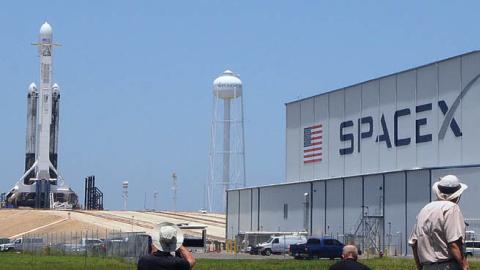The Biden administration recently started a review of critical U.S. supply chains, following on the heels of multiple manufacturing and defense-industrial base assessments by the previous White House and Pentagon teams. The new studies are likely to find the same results: There are numerous challenges facing U.S. supply chains created by decades of globalized economic development. By not addressing the demand side of manufacturing ecosystems, however, these assessments could prompt unproductive government policies or miss promising opportunities to strengthen U.S. industry.
Instead of only evaluating service and equipment providers, industrial policy should consider the market that shapes today’s industrial base and the value from research and development that will shape future demand.
For example, numerous private and industry microelectronics studies have called for the government to fund construction of new U.S. chip foundries or rescue those, like Intel, that have fallen on hard times due to an inability to field the most sophisticated semiconductors. Given the government subsidies provided to chipmakers like South Korea’s Samsung and the Taiwan Semiconductor Manufacturing Company, federal support is likely warranted for their American counterparts.
Considering trends in microelectronics demand, however, U.S. government funding should not chase today’s generation of semiconductor technology. By the time new fabrication facilities are built and attract customers, the market may have moved on to new designs and materials. U.S. policymakers should therefore incentivize private investment in current semiconductors and focus government funding on moving U.S. semiconductor manufacturing up the value chain toward next-generation technologies such as heterogeneous microelectronics, including the use of chiplets and 3D manufacturing.
Incorporating demand also provides a better way to assess industry-driven changes. For instance, the proposed acquisition of Aerojet Rocketdyne by Lockheed Martin has come under fire for eliminating the last remaining independent military rocket motor manufacturer following the acquisition of Orbital ATK by Northrop Grumman last year. Government policymakers and industry leaders are concerned that consolidation may reduce innovation and the defense-industrial base’s resilience. However, a more significant concern is the flat or declining demand for the products Aerojet Rocketdyne delivers.
Like the former Orbital ATK, Aerojet Rocketdyne builds solid-fuel rocket motors that power military missiles, from the U.S. Army’s AGM-114 Hellfire weapon to the Trident submarine-launched ballistic missile. The solid-fuel rocket motor business was already fragile, leading the Trump administration to prop it up with the Defense Production Act. Because they are mostly used in military missiles, orders for solid-fuel rocket motors will largely follow overall military spending, which is expected to decline in real terms during the Biden administration. New hypersonic boost-glide weapons to be fielded by the mid-2020s could strengthen sales, but at $30-50 million per missile, too few will likely be purchased to offset the impact of an overall reduction in munitions purchases.
Aerojet Rocketdyne also builds liquid-fuel motors that propel satellite boosters like those used in the National Security Space Launch system. The liquid-fuel rocket business is likely to prove more challenging than the solid-fuel motor market. New commercial providers like SpaceX, Blue Origin and Rocket Lab build their own liquid-fuel rocket motors and are taking a growing share of a shrinking government launch market. The share left for Aerojet will inevitably decline.
With a shrinking demand, substantial infrastructure and regulatory overhead, as well as a highly specialized workforce, Aerojet Rocketdyne would have difficulty surviving on its own. As part of Northrop Grumman, Orbital ATK can weather market changes and pivot to develop new energetic materials, rocket architectures, and cutting-edge solid-fuel motor technologies for weapons or space exploration. As a stand-alone company, Aerojet Rocketdyne would likely be unable to sustain enough business to fund the research needed to remain competitive for the next generation of motors. The loss of innovation from Aerojet Rocketdyne going out of business would be worse than what might happen if it becomes part of Lockheed Martin.
During the Cold War, the U.S. government and military funded most of the R&D and provided most of the demand for new technologies. With both now receding as sponsors and customers for high-tech products, from semiconductors to rocket motors, supply chain assessments can no longer focus only on product providers; they need to consider, if not start with, the demand side of an ecosystem.
Instead of spurring development of new technologies and inviting commercial industry to piggyback on their efforts, the Pentagon will need to increasingly leverage innovation and products from the commercial sector. The growing sophistication of technologies, like those for commercial space and telecommunications, also means defense contractors are competing with commercial providers in all but the most specialized military systems. To sustain access to those providers in the face of shrinking demand, the U.S. government may have to accept consolidation.
















